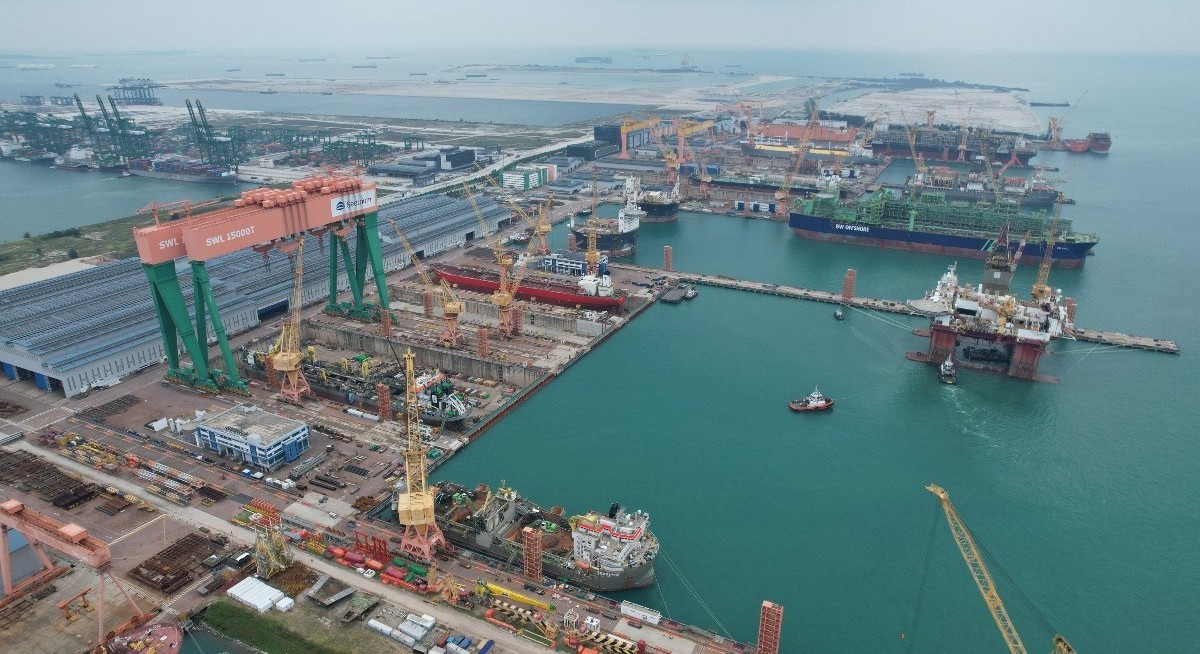“While Seatrium had announced in-principle settlement agreements with the Brazilian authorities on Feb 26, 2024, no firm and signed agreements had occurred at that point in time. These agreements would only be completed and signed in July 2025 and thus Seatrium’s view is that its obligation had expired at that point in time,” notes UOB Kay Hian’s Adrian Loh.
In its statement, Seatrium also noted that it had made provisions of $82.4 million in FY2023 for the Keppel indemnity, but as there were no binding and legally enforceable agreements signed with the Brazilian authorities before the indemnity expired on Feb 28, Seatrium reversed the provision in its FY2024 ended Dec 31, 2024 results.
The timing of the arbitration has not been announced yet.
“Seatrium has indicated it has engaged legal advisers to ‘defend the arbitration claim vigorously’. The $82.4 million amount represents [around] 16% of our FY2025 pre-tax profits,” says Citi’s Luis Hilado.
UOB Kay Hian’s Loh notes Seatrium’s ‘successful’ August and ‘robust’ net orderbook as at June
That aside, Loh remains positive over his outlook for Seatrium following a “successful” August with over $300 million of contracts won.
In mid-August, Turkey’s Karpowership announced that it had selected Seatrium to integrate four floating power plants or powerships at its Singapore yard with an option for two more. Loh estimates that the value of the contract is likely to be at around $50 million per vessel given that Karpowership will provide the hulls and main equipment. Work for this projects is expected to begin in 1Q2027.
See also: RHB raises DBS target price to $57.10 after bank’s stock hits new high
The agreement also includes the conversion, life extension, and repairs of three liquefied natural gas (LNG) carriers into floating storage regasification units (FSRUs).
Seatrium also announced, on Aug 27, that it won a contract from Golar LNG to upgrade the floating LNG (FLNG) Hilli Episeyo vessel. Loh estimates the project to be worth around $100 million. It is expected to commence in 3Q2026.
“Seatrium’s outlook remains anchored in a balanced growth strategy across offshore oil & gas, offshore wind, maritime upgrades and emerging decarbonisation solutions,” Loh writes.
For its 1HFY2025 ended June 30 results, Seatrium said its net order book stood at $18.6 billion, of which $6.3 billion are in renewables and cleaner/green solutions.
To Loh, the order book, which comprises 25 projects with deliveries scheduled through 2031, provides “strong multi-year revenue visibility”.
The portion of its order book in renewables and cleaner energy solutions also reflects the group’s “growing presence in offshore wind and low-carbon infrastructure”.
More importantly, Loh highlights Seatrium’s near-term pipeline of opportunities worth $30 billion across oil & gas, offshore wind and maritime solutions.
For more stories about where money flows, click here for Capital Section
“Management is focused on converting these opportunities into secured orders through reliable delivery and strong customer relationships,” Loh writes. “The company sees rising demand in energy security and the energy transition, positioning itself as a trusted partner across multiple geographies.”
“Like the Shell and BP contracts for Gulf of Mexico production platforms, Seatrium stated that it will look to leverage series-build efficiencies, disciplined execution, and operational streamlining to lift margins and productivity,” he adds. “The company has notably put in early-stage investments in carbon capture, ammonia bunkering, and clean energy solutions with the aim being to capture long-term growth in the global energy transition.”
In his view, the arbitration notice may have put an overhang on Seatrium, but it is somewhat “small and quantifiable” unlike the previous investigation conducted by the Monetary Authority of Singapore (MAS) and the Commercial Affairs Department (CAD), which has since been concluded.
Loh’s target price of $2.96 is based on an unchanged target P/B multiple of 1.5 times, 1.5 standard deviations (s.d.) above the company’s five-year average.
This is “reasonable”, in Loh’s view, given Seatrium’s “strong competitive position” around the world and within the O&M industry as a specialist asset builder. Seatrium’s increasing revenue visibility till 2031 and potential for more order wins till the end of 2025 is also a plus.
Citi’s Hilado has a target price of $2.65, which is based on an FY2026 P/B multiple of 1.2 times. “We believe the market will look into its long-term prospects as new higher-margin contracts should raise returns further and push [its] return on equity (ROE) higher,” he writes.
The P/B approach comes as the FY2023 write-offs have “significantly lessened the risk of goodwill impairments”.
Hilado’s target price implies an FY2025 P/E ratio of 17 times and an EV/ebitda multiple of 9 times.




